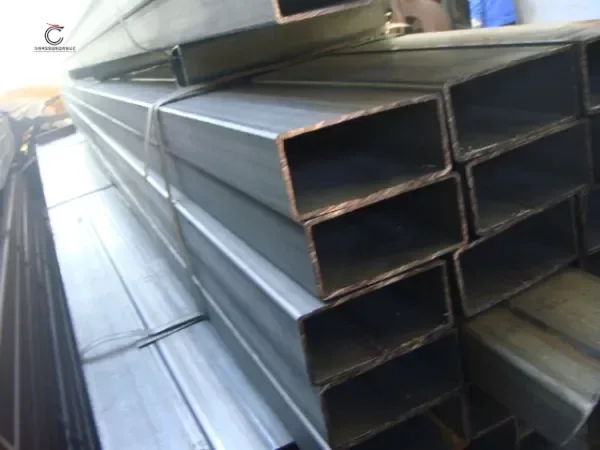Four ways to remove oil on the surface of rectangular square tubing
During production and transportation, the surface of the rectangular square tubing will inevitably be stained with oil, which will affect the quality of rust removal and phosphating, and reduce the bonding force between the coating and the substrate. So how to degreasing the rectangular square tubing? Today, I will introduce four commonly used methods for removing oil from rectangular square tubings.
(1) Organic solvent cleaning
It mainly uses organic solvents to dissolve saponified and unsaponifiable oils to remove oil stains on rectangular square tubings. Commonly used organic solvents are ethanol, gasoline for cleaning, toluene, carbon tetrachloride, trichloroethylene, etc.
Among them, the more effective solvents are carbon tetrachloride and trichloroethylene, which do not burn and can be degreasing at higher temperatures. It should be noted that after the organic solvent degreasing, supplementary degreasing must also be carried out. Because when the solvent is volatilized on the surface of the rectangular tube, a thin film is usually left, which can be removed by alkali cleaning and degreasing, electrochemical degreasing and other processes in the subsequent process.
(2) Electrochemical cleaning
Cathode degreasing is more commonly used, or alternate use of cathode and anode degreasing. Using the hydrogen precipitated on the cathode or the oxygen precipitated on the anode by electrochemical reaction, the solution on the surface of the rectangular square tubing is mechanically stirred to promote the separation of oil stains from the metal surface. At the same time, the solution is continuously exchanged, which is beneficial to the saponification reaction and emulsification of oil stains, and the remaining oil stains are separated from the metal surface of the rectangular square tubing under the influence of the continuously precipitated bubbles. However, in the process of cathodic degreasing, it is often accompanied by hydrogen infiltration into the metal, resulting in hydrogen embrittlement. Usually, the cathode and anode are alternately used to remove oil to prevent hydrogen embrittlement.

(3) lye cleaning
The cleaning method of a rectangular square tubing mainly based on the chemical action of alkali is widely used because of its simple use, low price and easy availability of raw materials. Since the alkali washing process relies on various functions such as saponification and emulsification, a single alkali cannot be used to achieve the above properties. Usually a variety of components are used, and sometimes auxiliary agents such as surfactants are added. The level of alkalinity determines the degree of the saponification reaction, and high alkalinity can reduce the surface tension between the oil stain and the solution, making the oil stain easy to emulsify. In addition, by washing with water after alkali washing, the cleaning agent remaining on the surface of the rectangular square tubing can be removed.
(4) Surfactant cleaning
It is a widely used degreasing method by utilizing the characteristics of low surface tension, good penetration and wettability, and strong emulsifying ability of surfactants. Through the emulsification of the surfactant, an interface film with a certain strength is formed on the oil-water interface, which changes the state of the interface, so that the oil stains are dispersed in the aqueous solution to form an emulsion. Or through the dissolution of the surfactant, the water-insoluble oil stains on the rectangular square tubing are dissolved in the surfactant micelles, so as to achieve the purpose of transferring the oil stains into the aqueous solution.
The above is the introduction of the oil outlet method of the rectangular square tubing. If you have more questions, please contact Cangzhou Shenlong Pipe Manufacturing Co., Ltd.!






